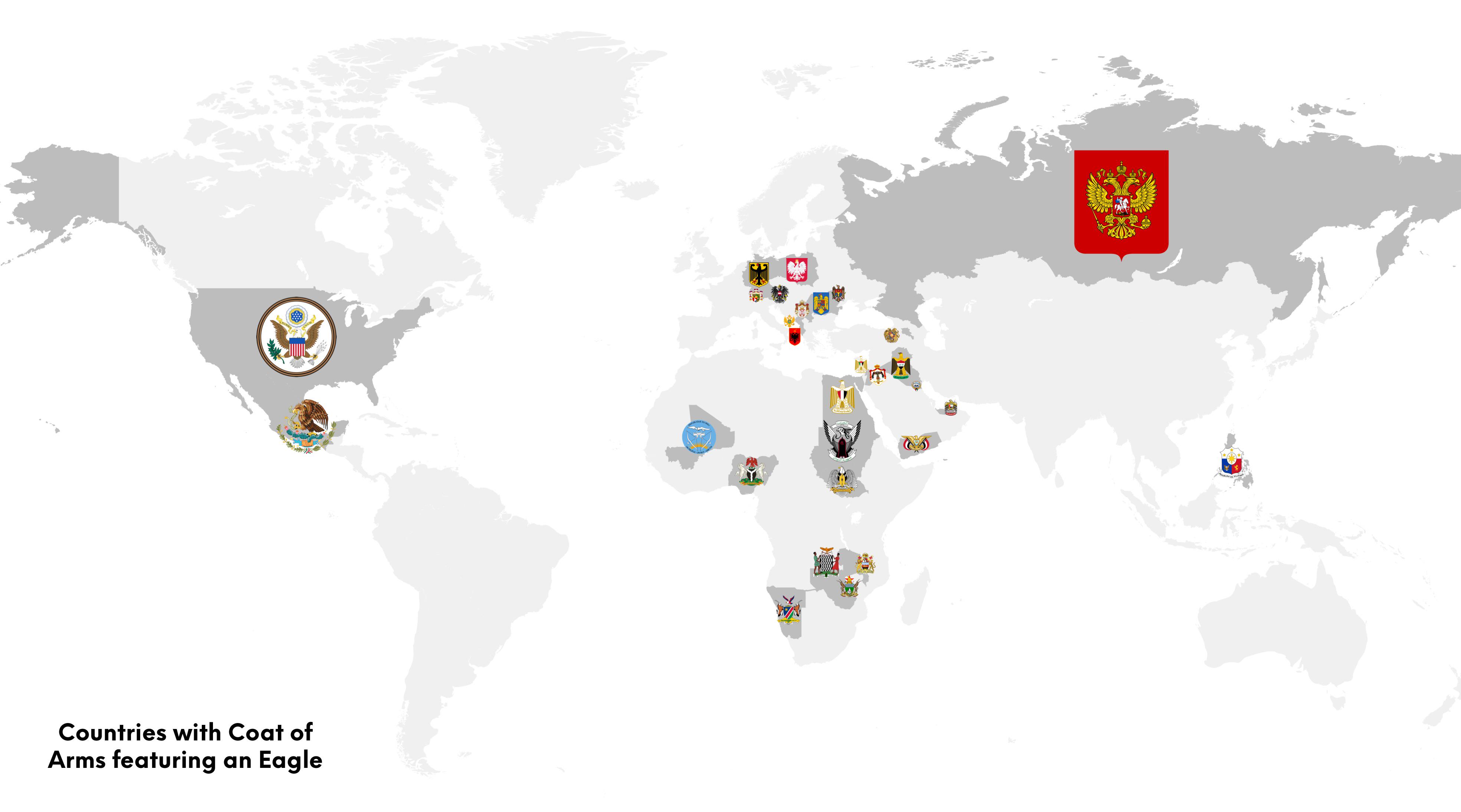Map of Countries with Eagle Coat of Arms


Alex Cartwright
Senior Cartographer & GIS Specialist
Alex Cartwright is a renowned cartographer and geographic information systems specialist with over 15 years of experience in spatial analysis and data...
Geographic Analysis
What This Map Shows
The map titled "Countries with a Coat of Arms Featuring an Eagle" provides a visual representation of nations across the globe that incorporate the majestic eagle into their national heraldry. This powerful symbol appears in various forms, often representing strength, courage, and freedom. Moreover, the eagle’s presence on a country's coat of arms can reflect historical significance, cultural values, and national identity.
Eagles have been revered by numerous civilizations throughout history and continue to hold symbolic meaning in modern times. This map invites us to explore not only the countries that feature this emblem but also the stories behind the use of the eagle in heraldry.
Deep Dive into Eagle Symbolism in Heraldry
Eagles have been a symbol of power and nobility since ancient times. The Romans famously used the eagle as their standard, and it has since been adopted by various nations as a representation of authority and strength. In heraldry, the eagle is often depicted in flight or displayed with wings spread, symbolizing freedom and high aspirations.
Interestingly, many countries select the eagle as a central figure in their coat of arms due to its majestic stature and association with the divine. For instance, the double-headed eagle is significant in heraldry and mythology, representing the duality of power—both spiritual and temporal. This can be seen in the coats of arms of countries like Russia and Albania, where the double-headed eagle symbolizes sovereignty and control over both land and sea.
Moreover, the colors and positioning of the eagle in these coats of arms also carry meaning. For example, the gold eagle in Germany’s coat of arms represents courage and bravery, while the black eagle in the emblem symbolizes the nation’s strength and unity.
Statistically, there are around 25 countries that feature an eagle on their coat of arms, demonstrating how widespread and significant this symbol is in global heraldry. Countries like the United States, Mexico, and Poland incorporate the eagle to reflect their national identity and heritage. The U.S. bald eagle, for instance, represents freedom and independence, resonating deeply with American values.
Regional Analysis
Examining the regions represented in the map, Europe showcases a rich tapestry of eagle heraldry. Nations like Poland, with its white eagle against a red background, and the double-headed eagle of Serbia, offer a glimpse into how regional histories influence the symbolism of the eagle. The use of eagles in European coats of arms often intertwines with national myths and historical narratives, making them not just symbols but also storytellers of the past.
In the Americas, the eagle's portrayal varies from the majestic bald eagle of the United States to the golden eagle on the coat of arms of Mexico, representing the Aztec heritage. The Mexican coat of arms features an eagle perched on a cactus, devouring a snake, which is an emblem of the country's foundation myth and its struggle against oppression.
Meanwhile, in Asia, countries like Kazakhstan and Albania incorporate the eagle into their national symbols, reflecting regional pride and the importance of the eagle in local folklore. The eagle’s presence in these diverse regions serves as a reminder of the shared human admiration for this powerful bird and the unique narratives each culture weaves around it.
Significance and Impact
Why does the eagle matter so much in national symbols? The coat of arms is often one of the first images that come to mind when thinking of a country’s identity. It encapsulates pride, history, and values in a single image. The eagle, as a symbol of freedom and strength, resonates deeply with nationalistic sentiments and aspirations for sovereignty, particularly in countries with a history of struggle for independence.
In contemporary contexts, the eagle remains relevant as nations navigate their identities in a globalized world. For instance, as new nations emerge or old ones redefine their identities, the eagle can symbolize resilience and hope. Furthermore, the eagle's portrayal in heraldry can influence national branding, impacting tourism and international relations. Countries may leverage their eagle imagery in marketing campaigns to evoke feelings of strength and freedom, appealing to a global audience.
In conclusion, the symbolism of the eagle in coats of arms is not merely decorative; it serves as a powerful emblem of national identity, cultural heritage, and historical narratives. The map showcasing these countries invites us to explore the rich stories embedded in the eagle’s wings, connecting us to the past while inspiring future generations.
Visualization Details
- Published
- August 9, 2025
- Views
- 118
Comments
Loading comments...